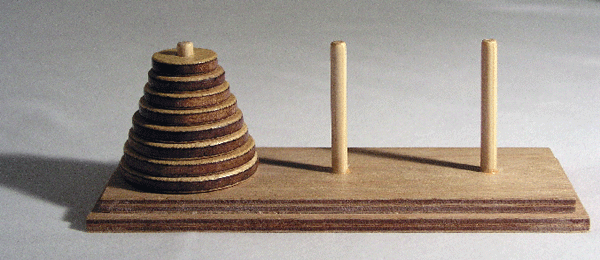Appearances In Modern Culture
The Tower of Hanoi (known by other names like the Tower of Brahma or Lucas tower) is a much publicized mathematical puzzle, which has been extended and fashioned into several computer games. The puzzle itself may seem simple initially. After all, what can be so hard about transferring circular rings from one needle to another?
But though, on the surface, the puzzle might appear to be easily solvable, it is deceptively hard. It has generated mathematical theories involving complex algorithms and the game grows incredibly harder with the increase in the number of disks that have to be moved, since only one disk must be moved at a time and that too, during its placement, it must not be put above a disk smaller in size than itself.

The original, traditional Tower of Hanoi puzzle consisted of sixty four disks. It can be deduced from this just how difficult it must have been. When a player uses three disks, the puzzle can be solved in seven steps ideally.
References to this puzzle in popular culture
- In April 1959, Eric Frank Russell, a British novelist, who wrote popular books under the sci-fi genre, came up with a novella "Now Inhale", where the protagonist Wayne Taylor ("a Terran interstellar scout"), is accidentally marooned on an unknown alien planet and is taken captive by the residents as they believe that he is a spy. He is put under trial and subsequently sentenced to death. But the alien civilization has a unique tradition- just like we offer a convict who faces a death sentence, a last wish, similarly, they offered the prisoner to play a game of his choice and if he could, then make it last as long as possible. Taylor chooses to play the Tower of Hanoi, and that too with 64 disks. To the aliens, he says that the game is called "Arky-malarkey".
- In the 2011 movie, "Rise of the Planet of Apes", a variation of game, called Lucas Tower in the film, is used to test the intelligence of the primates under experimentation.
- The puzzle, disguised as the "Trilogic Game", makes an appearance in the 1966 Doctor Who story, The Celestial Toymaker.
- This puzzle also features in larger, more elaborate graphical computer games like "Star Wars: Knights of the Old Republic", and "Mass Effect".
